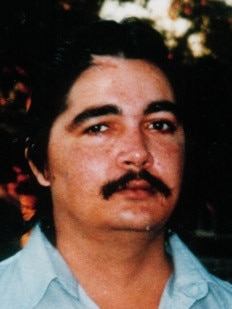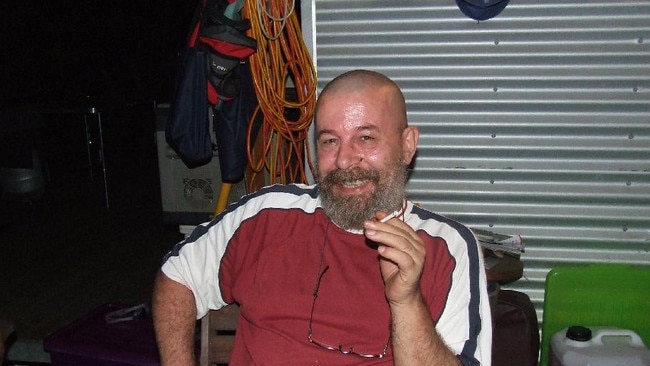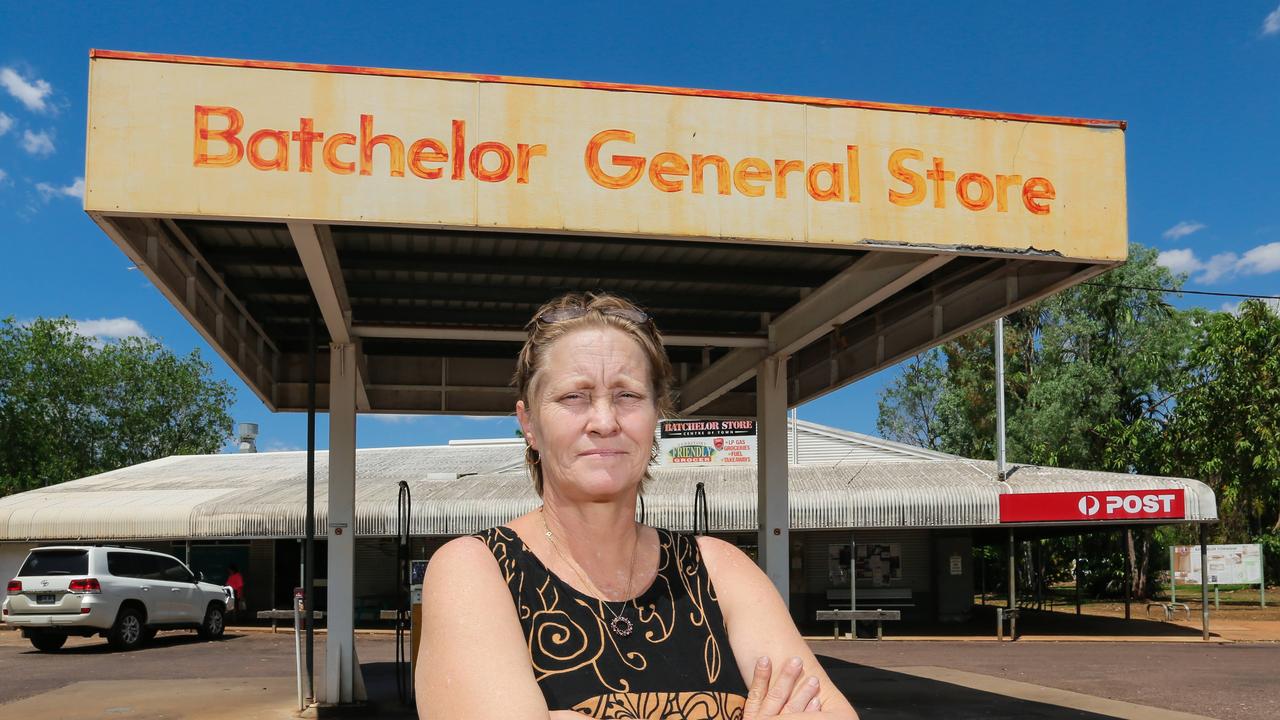Missing: The people who vanished into thin air in the Northern Territory
Dozens of people are missing around the Territory, some have not been seen for decades. So what are police doing to find lost loved ones? JUDITH AISTHORPE reports

Crime and Court
Don't miss out on the headlines from Crime and Court. Followed categories will be added to My News.
The Northern Territory is an unforgiving landscape.
Desert, 40C heat, a patchwork of rocky escarpments, dry sunbaked land, buffalo, snakes, crocodiles and a transient population make for tough conditions to live in.
And it’s just as demanding when trying to find someone who’s missing.
But the officers tasked with finding a missing person are dedicated to the cases.
■ ■ ■
EACH year 38,000 people go missing in Australia. Of those, 98 per cent of missing persons cases result in a person being found safe and well.

Tomorrow marks the start of National Missing Persons Week, which is commemorating 30 years this year.
The Australian Federal Police categorise a long-term missing person as someone who has been missing for more than three months.
Across Australia there are about 2000 long-term missing people — some of who were last seen in the Northern Territory.
NT Police can’t confirm exactly how many people there are missing in our jurisdiction due to the complexity of missing persons cases.
People can be classified as a missing person in four categories.
Concern for welfare means they can become a missing person case but initially it’s just a check on a person following a report to police.
Missing — lost are cases of a bushwalker or overdue party.
Missing — voluntary has several scenarios but usually involves a person going walkabout or taking time out without letting anyone know.
While missing — involuntary normally involves suspicious circumstances, evidence or information to suggest the person may have come to grief at the hands of another.
The people shown on this page are those that have been featured on police missing persons websites.
Some have been missing since the 1980s while others have been missing for less than a year — like in the case of Larrimah resident Patrick ‘Paddy’ Moriarty.
■ ■ ■
DETECTIVE Senior Sergeant First Class Wayne Smith is in charge of the NT Police missing persons unit.
He said police ddidn’t have a reason why people go missing but certain characteristics were found more commonly in missing people.

“The most common age group to go missing is those aged between 13 and 17 years of age thankfully the majority of them are located,” he said.
“People who are physically unwell, people who might suffer poor mental health and people who are elderly and suffer from dementia are our high risk people.”
Many of the people who go missing in the Territory are travellers — not used to the dry searing heat of Central Australia or the humidity of the Top End.
Others are residents of the NT and has disappeared for reasons yet to be determined.
Sen Sgt Smith said the biggest hurdle for police, once a report had been made, was the remoteness of the Territory.
“Distance and time is the greatest issue we have,” he said.
“The Territory, although large, has spread out major centres and a lot of area in between.
“The time it takes to get there or the time it might take for police to respond is another issue that we’re confronted with and obvious things — the climate, the Northern Territory has some harsh climate.
A lack of technology in remote areas also proved difficult.
“Where there’s low numbers of population it can decrease the number of witnesses, which can be an issue for an investigation and a lack of technology is probably the only other issue in remote locations a lack of phones, internet, laptops and CCTV, which is a good tool for us to track someone’s movements,” he said.
■ ■ ■
CONTRARY to popular belief, Sen Sgt Smith stresses missing persons reports can be filed as soon as someone is concerned about someone’s whereabouts.
The myth that you have to wait 24 hours before filing a report is false.
“The moment you don’t know where they are and you have concerns, police encourage you to call or attend a police station,” he said.
When compiling a case of a missing person, every detail is collected — from their health, past history, habits and last known location. It is not a crime to go missing.
The Major Crime Squad often follows up with the investigation — visiting the site where the person was last seen and talking to people who may have information. Detective Acting Senior Sergeant Kieran Wells heads up the Major Crime Unit.
He said the unit received information sporadically about missing persons. All tips were investigated.
“We’re always actively seeking information,” he said. “People out there in the community probably do have information and at times they may not think that it’s relevant but anything can lead us down an avenue of inquiry that can lead us to a resolution to the matter. “Any piece of information that we receive in regards to any missing person is followed up and we greatly appreciate anything.”
The important thing for police to remember is the humans behind the pictures.
No matter how cold a case seems to be, they always want help.
“Every single one of those people missing is a human being; behind all of those human beings are families. Families who are suffering tremendous anxiety lots of sleepless nights, they want to know what’s happened to their loved ones,” Sen Sgt Wells said.
If you have seen anyone or know information that may help in police investigations police ask you to visit you nearest police station to make a report to call Crime Stoppers on 1800 333 000. To see a more extensive list of missing persons head to www.missingpersons.gov.au

PATRICK (PADDY) JOSEPH MORIARTY
Age at time of disappearance (and now): 70 (71)
Reported to police: December 19, 2017
Description: Slim and elderly caucasian male with grey hair and a bushy moustache. 178cm tall.
Last seen: Wearing a singlet, dark shorts, silver watch and black thongs at dusk on December 16, 2017 when he left the Larrimah Pink Panther Hotel with his dog on his red quad bike.
Paddy walked his dog each morning and attended the Larrimah Hotel each afternoon. He had a regular routine. Paddy had a great like towards his dog, Kellie (a female red and brown kelpie) and his social life was conducted at the Larrimah Hotel. Paddy had a landline connected to his dwelling but he made no outgoing calls in December 2017. He had no mobile or internet connected and he has not accessed bank accounts since before the date of his disappearance. No family have been identified in Australia. Paddy had a history of Ischaemic Heat Disease and hypertension. In 2003, Paddy had heart surgery and was on medication at the time of his disappearance.

REBECCA HAYWARD
Age at time of disappearance (and now): 34 (35)
Reported to police: January 1, 2017
Description: Indigenous with an olive complexion, long dark straight hair, brown eyes, medium build and is about 173cm tall.
Last seen: On CCTV footage from Alice Springs Airport wearing blue denim shorts, green shirt and thongs on January 2 walking about 10km north of Alice Springs near James Orr Overpass, Stuart Hwy.
Rebecca was visiting Alice Springs with family. She had only recently arrived from Western Australia before she went missing and was not familiar with the Alice Springs area. She has not accessed bank accounts and there has been no activity on phone or internet accounts. It is not known why Rebecca went missing or the circumstances around her disappearance.

SHAUN ROBERT JONES
Age at time of disappearance (and now): 43 (46)
Reported to police: October 9, 2015
Description: Caucasian male, about 180cm tall with a heavy build with a bald head.
Last seen: Wearing a black T-shirt and light coloured track pants. He also had a pronounced limp when walking. Was last seen walking about 4km south of Tennant Creek along the Stuart Hwy on October 3, 2015.
Shaun was reported missing by family members in South Australia. He was travelling around Australia and at the time of his disappearance he had no fixed residence. He had no known method of transport. Shaun was living an itinerate lifestyle prior to his disappearance, which makes it difficult to trace his last movements.

JAMIE STEPHEN HERDMAN
Age at time of disappearance (and now): 26 (38)
Reported to police: December 5, 2006
Description: Caucasian male with athletic build, about 175cm tall with sandy coloured dreadlocked hair.
Last seen: Wearing a shirt, ¾ length shorts and thongs on November 26, 2006 at the Hi Way Inn at Daly Waters.
Jamie left his hometown of Broome on November 22, 2006. He was travelling towards Darwin. He was driving a Nissan van that had a painting of a landscape on the rear tailgate. It consisted of hills painted in black, trees and a lake in the middle. Jamie’s car has been located but he is still missing. Jamie last accessed his bank accounts in Daly Waters on November 26, 2006. His accounts have not been touched since, nor has his mobile phone or internet accounts. Jamie was reported missing December 5, 2006 after he failed to contact friends or family. This was out of character for Jamie. His family and friends describe him as a quiet character who kept to himself and a hard worker who enjoyed a few drinks with colleagues. He enjoyed outdoor activities such as skiing and fishing. It has been 12 years since he disappeared and he has not been in contact with any of his family or friends.

PETER KOEVER
Age at time of disappearance (and now): 54 (62)
Reported to police: June 2010
Description: Caucasian male with a medium to heavy build. He had a beard with short cropped brown hair. About 176cm tall.
Last seen: Peter was last seen by friends in December 2009.
Peter was a Hungarian national who lived alone in the Girraween area. He had mentioned to friends his desire to return to Europe. He was reported missing after losing contact with family and friends. He had no identified method of transport. Accounts and phone have not been accessed. He has not made contact with any family or friends.Police believe he has not travelled overseas.

JOANNE ANDERSON
Age at time of disappearance (and now): 37 (41)
Reported to police: November 3, 2014
Description: Indigenous with a dark complexion, black hair, heavy build and is about 165cm tall.
Last seen: Wearing black shorts, a black shirt and barefoot. She was last seen on October 31, 2014 in Mataranka with family.
Joanne lived in Mataranka but has family links to Katherine. She was last seen by family who couldn’t find her when they woke up the next day. She has not been seen since. It is not known whether she had transport. Bank, phone, email accounts have not been touched.


